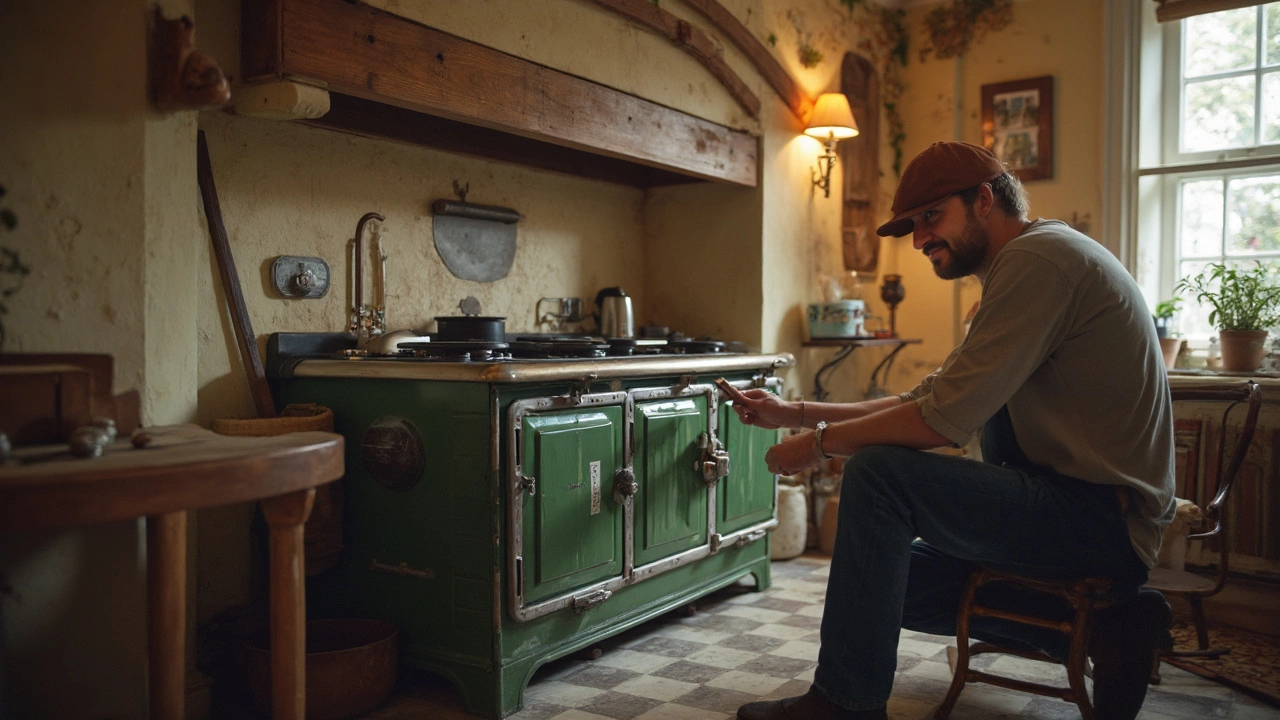Thinking about fixing a 15-year-old stove? It's a common dilemma for many homeowners. Frankly, it's not just about tinkering under the hood but knowing when it's time to put your trusty old cooker to rest.
Money is a huge factor, right? Calling in a repair technician can sometimes feel like it's burning a hole in your pocket, especially if it's a major fix. But hey, small repairs might breathe a few more years into your stove.
What's the condition of your stove, anyway? If it’s breaking down every other month or the parts are rare to find, you might want to rethink continuing on that road.
Then there’s energy efficiency. Older stoves tend to guzzle more energy, which shows up on your bill. A newer model might save you some bucks in energy costs over time. We’ll help you weigh these factors to decide whether to fix it or just say goodbye.
Understanding the Costs
When you hear a strange clunk from your 15-year-old stove, the first question is usually, "How much is this going to cost me?" Let’s break it down.
Typical stove repair costs can range anywhere from $150 to $400, depending on what’s acting up. A busted heating element? That could set you back around $150. Got a malfunctioning control board? That’s closer to $300. Yikes, right?
It's crucial to compare these repair costs with buying a new appliance. A brand new, standard stove might start around $500 and shoot up past $2,000, based on make and model. So, if your fixes are nearing these figures, a replacement might be more wallet-friendly.
Don't forget to factor in labor costs. Repair technicians often charge between $50 to $150 per hour. That's a big chunk of change.
Here's a quick table for clarity:
| Repair Type | Estimated Cost |
|---|---|
| Heating Element | $150 |
| Control Board | $300 |
| Labor (per hour) | $50-$150 |
If you're handy, you might consider DIY repairs for smaller issues to save cash. Remember though, if you're messing with anything electrical, it’s often safer to leave it to the pros.
Assessing the Condition
Alright, let's focus on whether your old stove is hanging by a thread or still kicking strong. First off, check for the obvious signs of wear and tear. If the burners aren't heating up like they used to, or the oven takes ages to roast a chicken, it's time for a closer look.
Start with the exterior—any rust or dents? If yes, that’s not just about aesthetics; it often hints at underlying issues. Inside, burnt-out elements or non-functional knobs are tell-tale signs.
It's crucial to weigh these issues against repair costs. According to appliance expert Marshall Gran,
"A stove older than a decade with consistent problems likely won't see much benefit from minor repairs. Consider investing instead in long-lasting solutions."
Now, let's talk parts and pieces. With older models, finding specific parts can sometimes be hassle and pricey. You might end up spending more than expected just chasing down a rare burner.
If you’re a DIY-er, make sure replacement parts are readily available. If not, manufacturers often phase out parts for appliances older than 15 years. You don't want to keep an appliance when it's impossible to fix.
Don’t forget about safety. Gas leaks or electric faults can transform an old stove from a dated appliance into a household hazard. Reliability is non-negotiable when safety is at stake.
In summary, an honest assessment of your stove’s condition, looking at everything from aesthetics to parts accessibility, is essential in deciding if it’s worth keeping up with repairs. Remember, sometimes the issues are too extensive, hinting it's time to consider another option.

Evaluating Energy Efficiency
When it comes to owning an older stove, one of the biggies is energy usage. Frankly, older appliances are not the best when it comes to energy efficiency. They tend to use more power, which directly hits your wallet when the electricity bill arrives each month.
But how can you tell if your stove is an energy hog? Well, you can check out its old energy rating, if available. Back then, these ratings weren't as strict as today. So, even if it seemed okay 15 years ago, it might be a different story now. Modern stoves are way more efficient, sometimes reducing energy use by up to 30%. That's a massive difference!
Here's a little trick: Monitor your electricity bills over a few months. If you're noticing a climb while your usage hasn’t changed, your stove might be the culprit.
If you're considering an upgrade, newer stoves often come with induction or convection technology. These are designed to cook food faster and use energy wisely.
Want a clearer picture? Take a look at this comparison:
| Feature | Old Stoves | New Stoves |
|---|---|---|
| Energy Consumption | High | Low to Moderate |
| Cost Savings | Minimal | Up to 30% less on bills |
| Technology | Basic | Advanced (Induction/Convection) |
Before fixing the old one, maybe scout around for some modern alternatives. It’s not just about cutting costs; it may also be a chance to make your home more sustainable. So, maybe keeping a balance between short-term repair expenses and long-term savings isn't a bad idea.
Making the Decision
So, you're at the crossroads, huh? To repair or to replace—it's a tough call when dealing with a 15-year-old stove. Let's break it down a bit to help make that decision a tad easier.
First off, crunch the numbers. Get a repair quote and compare it with the cost of a new stove. A good rule of thumb? If repair costs exceed half the price of a new model, think about going shopping. Repairing might seem cheaper upfront, but in the long run, a new appliance could save you cash, especially with energy costs.
Speaking of energy, is that old cooker a power hog? New stoves come with energy-efficient features that might lower your utility bills significantly. A standard modern stove can be about 20% more efficient than models from over a decade ago.
Consider functionality. Do the newer models have features that make cooking more enjoyable and manageable? From self-cleaning to precise temperature controls, movers and shakers in the stove world may offer perks you hadn’t imagined a decade and a half ago.
If sustainability rings a bell for you, keeping your current stove alive might be the greener choice, minimizing electronic waste. But don’t forget to factor emissions and energy waste that old appliances might cause.
Let’s not overlook personal preference. Maybe there's a sentimental attachment to that stove, or perhaps you're itching for the latest tech. At the end, choosing to repair or replace depends on where your priorities lie: costs, efficiency, functionality, environmental impact, or personal preference.
- Compare repair and replacement costs
- Evaluate energy efficiency and potential savings
- Consider modern features and convenience
- Assess environmental impact
- Reflect your lifestyle and personal preferences
So, whether you choose to fix or to ditch, weigh what matters most to you, and make a choice that makes you smile every time you're in the kitchen!
